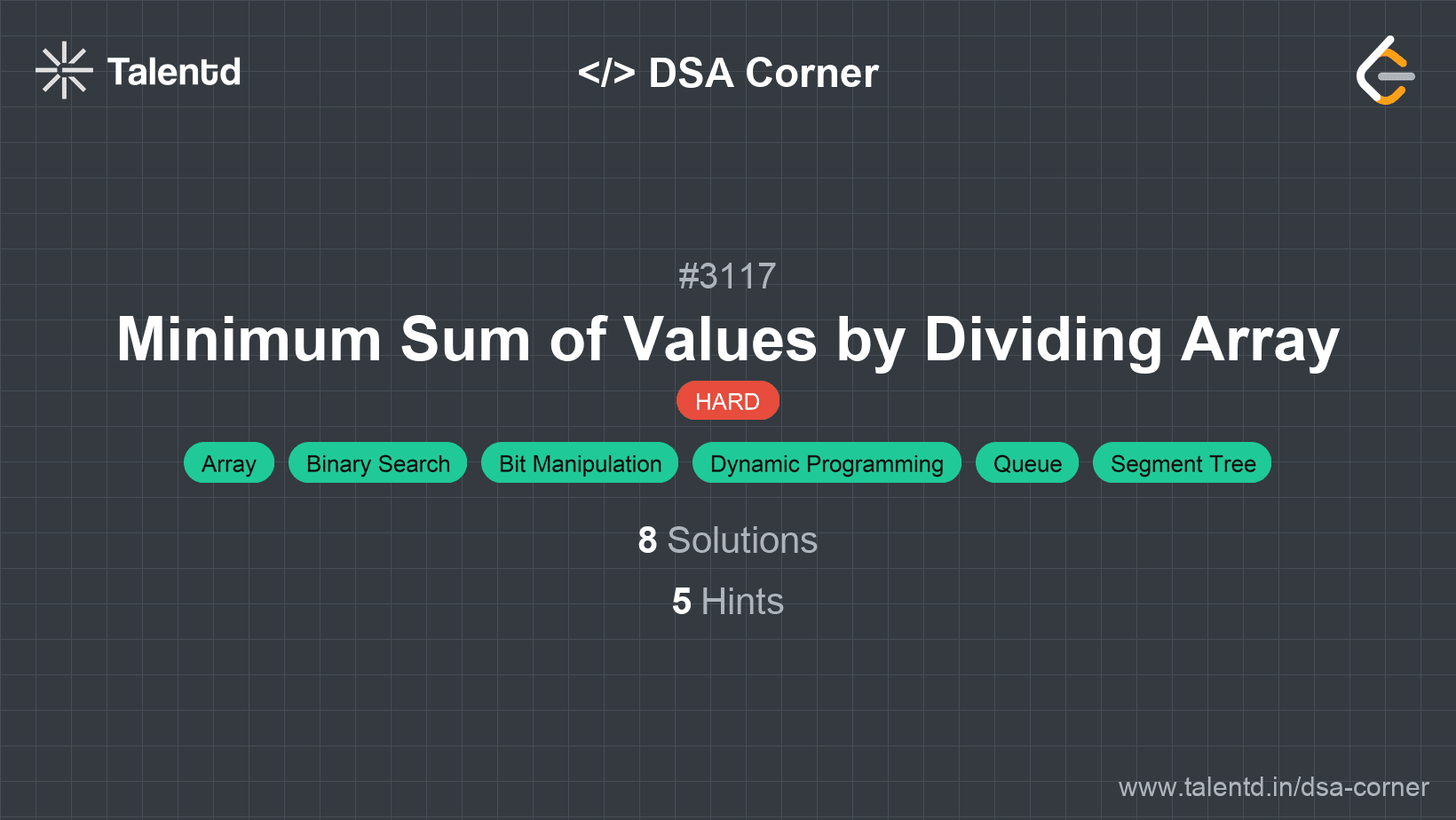
Sponsored
Sponsored
Use these hints if you're stuck. Try solving on your own first.
Let <code>dp[i][j]</code> be the optimal answer to split <code>nums[0..(i - 1)]</code> into the first <code>j</code> andValues.
<code>dp[i][j] = min(dp[(i - z)][j - 1]) + nums[i - 1]</code> over all <code>x <= z <= y</code> and <code>dp[0][0] = 0</code>, where <code>x</code> and <code>y</code> are the longest and shortest subarrays ending with <code>nums[i - 1]</code> and the bitwise-and of all the values in it is <code>andValues[j - 1]</code>.
The answer is <code>dp[n][m]</code>.
To calculate <code>x</code> and <code>y</code>, we can use binary search (or sliding window). Note that the more values we have, the smaller the <code>AND</code> value is.
To calculate the result, we need to support RMQ (range minimum query). Segment tree is one way to do it in <code>O(log(n))</code>. But we can use Monotonic Queue since the ranges are indeed “sliding to right” which can be reduced to the classical minimum value in sliding window problem, for a <code>O(n)</code> solution.